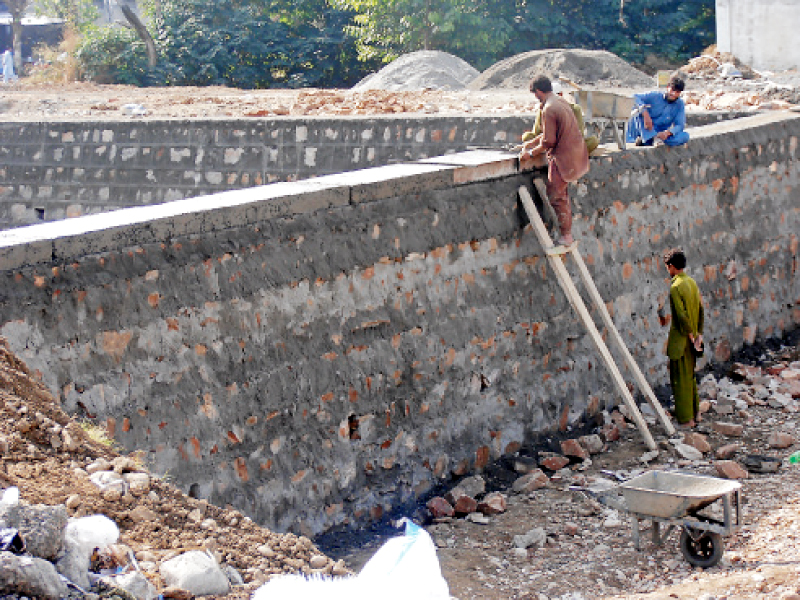
The famous monument of Harkishan Garh Fort is being exposed to decay, with its historic identity now defaced. Locals cite encroachment by government departments and lack of attention by the archaeological department as the main causes for this.
The fort, once a strategically important building of the Sikh army in Hazara, stands totally undefended as the government departments responsible for preserving heritage appear to be allegedly involved in defacing the historic monument.
Spread over a n area of about 70 kanals, the historic fort was built by Governor Sardar Hari Singh Nalwa during 1822-23; about four years after the Sikhs annexed Kashmir and Hazara. The fort is encircled by a strategically important 20 feet deep trench built to protect the garrisoned Sikh forces.
Four yards thick and 16 yards high carved stone walls with two tall wooden gates represent the magnificent masonry of the Sikh rule. Despite no preservation work being done in the past 190 years, these walls and gates are still visible.
The main purpose of the structure was to uphold the Sikh conquest of the area and use it as their base for further advances. Harkishan Garh Fort also served as the district headquarters of the British administration from 1849 to 1853, when Major James Abbott relocated it to Abbottabad.

After the creation of Pakistan, the police took over the western side of the fort, establishing a police station and police lines. The revenue department, on the other hand, occupied the eastern part. Both these departments have been reportedly occupying Harkishan Garh Fort since and have, in violation of the Antiquities Act, made changes to the building by new construction inside the fort’s premises.
The municipal administration, in-charge of preserving historic sites, has also encroached upon the fort’s land and constructed an over-head water tank on the western side.
The district accounts office occupied land on the northern side of the monument and constructed offices a few years ago, but aborted the plan half-way due to unknown reasons. While they also already occupy rooms situated on the right side of the southern entrance, adjacent to Haripur City Police Station, the department has now occupied over two kanals of land in the fort. They were allotted the land last year for the construction of new two-storey offices which started just a few days ago.
The Construction and Works (C&W) department was tasked to build the offices at a cost of Rs35 million, according to Engineer Jahfar Shah. For this project, walls have been constructed in the historic trench of the fort, while the building is being constructed on the eastern side of the main entrance.
“We were given the go-ahead to construct the building by the district accounts officer,” said Shah of C&W, adding his department was only following instructions. Shah said he knew it was a historic place, but could do nothing to stop the accounts department from encroaching on the monument.
In his defence, District Accounts Officer Shahid Bhatti said the land was allotted to his department last year, when he was not posted in Haripur. He said only an access road was being built in the trench and that the main monument would remain unaffected, as the new building would stand on open space adjacent to the record room of the revenue department.
Dr Shakirullah Khan, professor at the Archaeology Department of Hazara University, condemned the encroachment of the historic site. He said upon the request of former vice chancellor of Hazara University, Dr Ehsan, the Tehsil Municipal Administration, Haripur had donated a piece of land measuring 4.5 kanals for the construction of a museum situated near Harkishan Garh Fort in early 2008.
Dr Khan said construction work had started, but had to be cut short when the university administration was sued by some people from Sikandarpur village, who claimed the land was already allotted to a girls primary school.
“Any kind of changes, encroachment or harm to historic sites is a crime under the Antiquities Act 1997,” said Dr Khan, demanding the government to stop construction on the property and instead allocate funds for its restoration.
Khyber-Pakhtunkhwa Archaeology Department Director Professor Dr Naseem Khan was not available for comment.
Published in The Express Tribune, November 3rd, 2013.























COMMENTS
Comments are moderated and generally will be posted if they are on-topic and not abusive.
For more information, please see our Comments FAQ